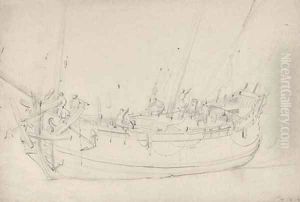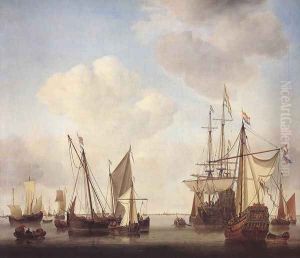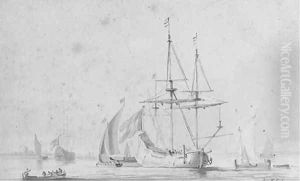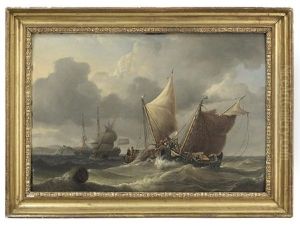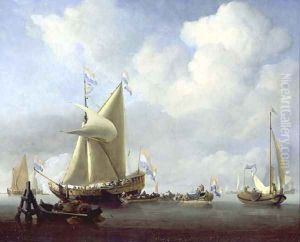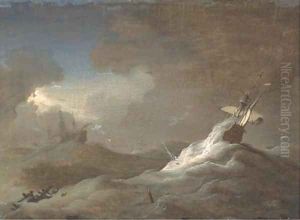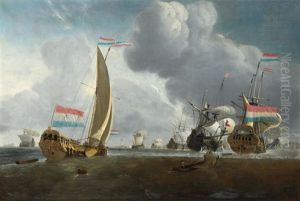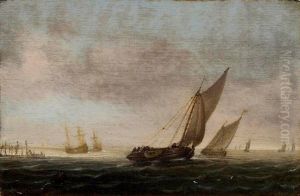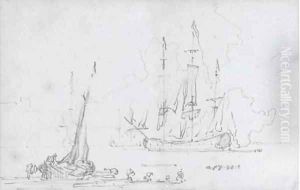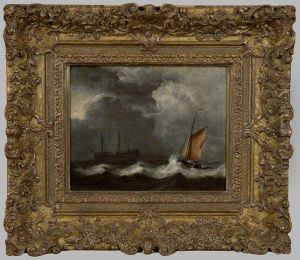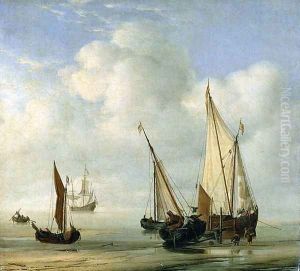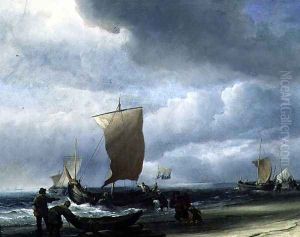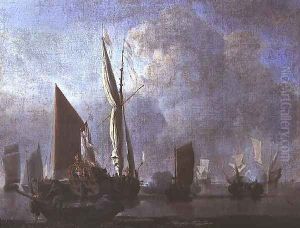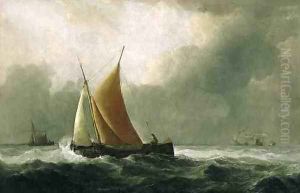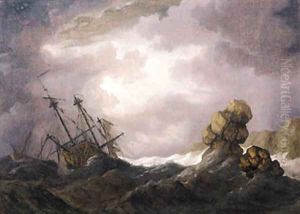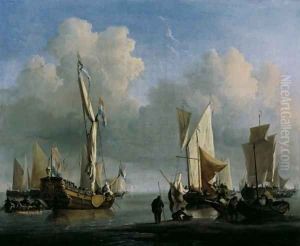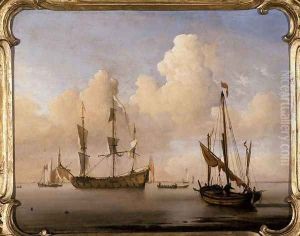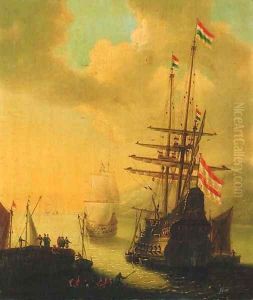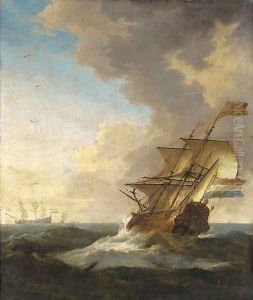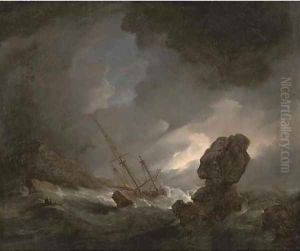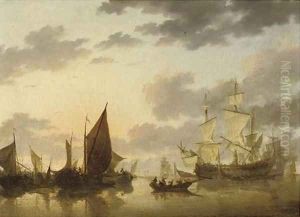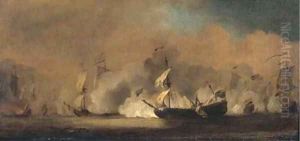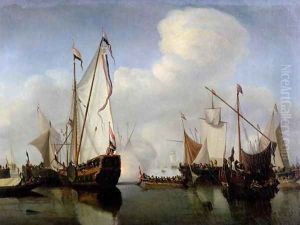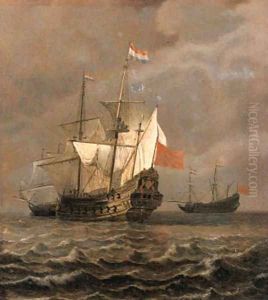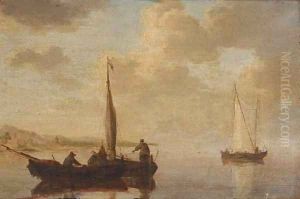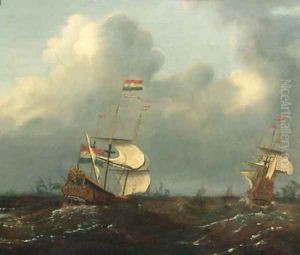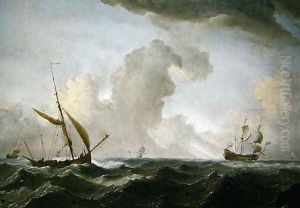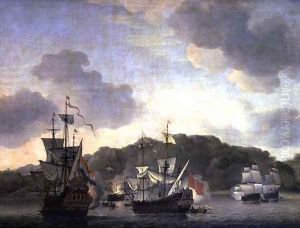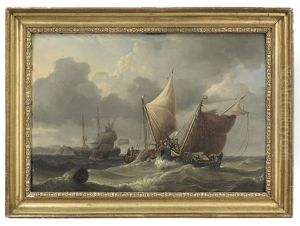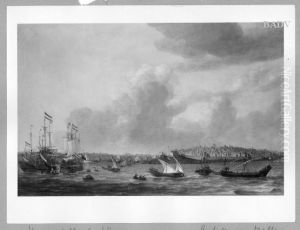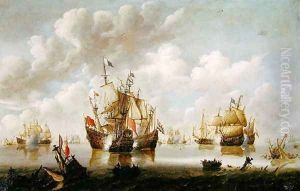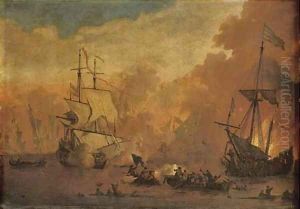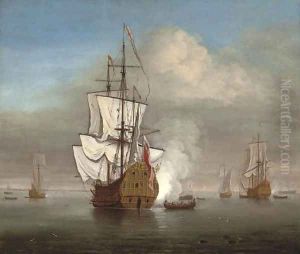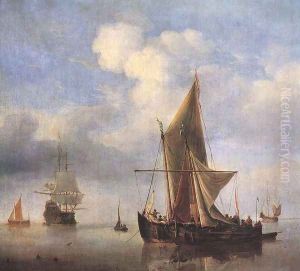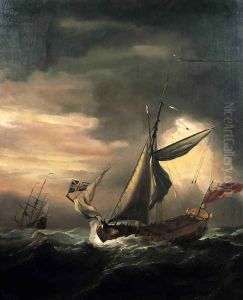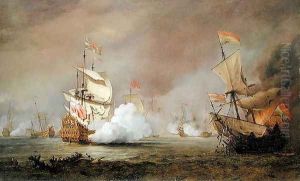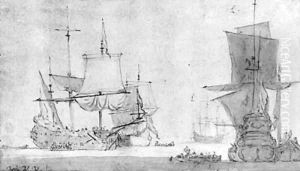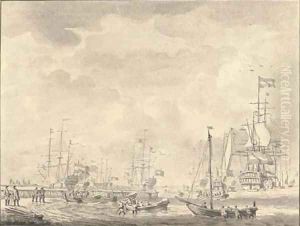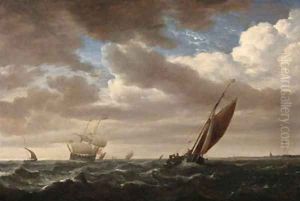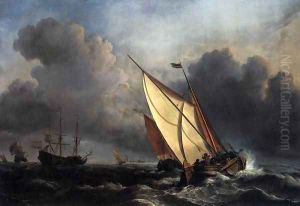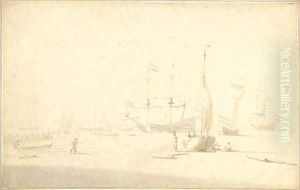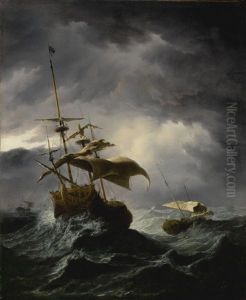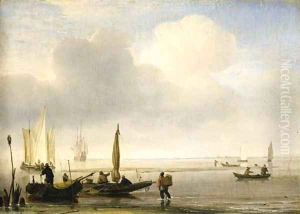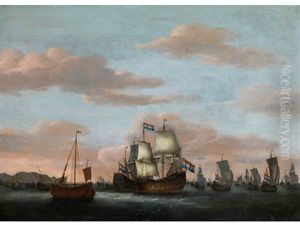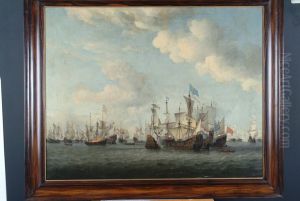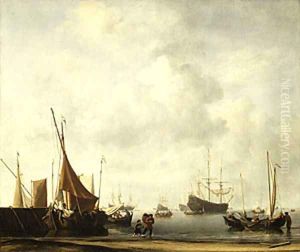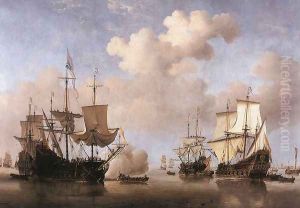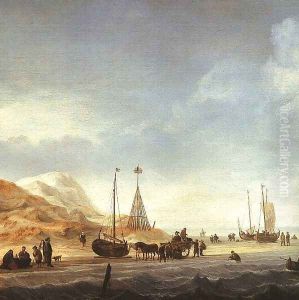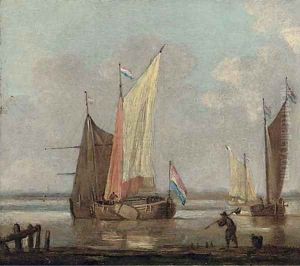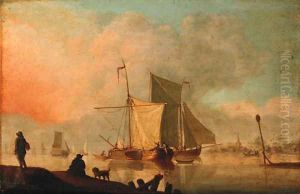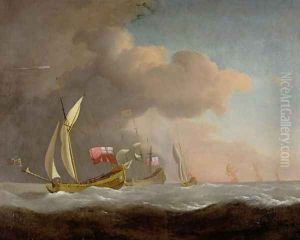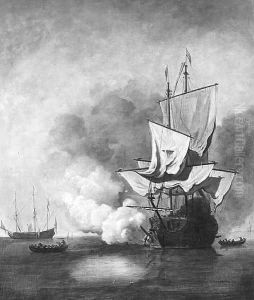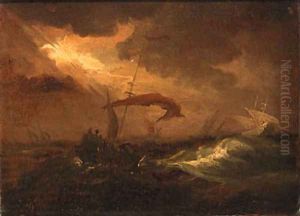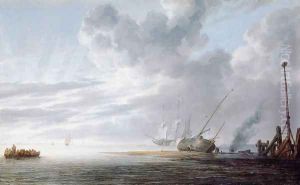Willem van de Velde the Younger Paintings
Willem van de Velde the Younger, born in 1633 in Leiden, Netherlands, was a prominent Dutch painter who specialized in marine art, a genre that was highly popular in the 17th century Dutch Golden Age. He was the son of Willem van de Velde the Elder, also a well-regarded marine artist, from whom he received his early training. The van de Velde family, including Willem the Younger and his father, moved to Amsterdam in the 1650s, where Willem further developed his skills and established his reputation as a leading maritime painter.
Willem the Younger is best known for his detailed and realistic depictions of sea battles, ships, and calm seascapes. His works are distinguished by their meticulous detail, precise craftsmanship, and the serene and often majestic portrayal of the sea. He had the unique ability to capture the texture of the sea and the sky, the movement of the water, and the intricacies of the ships and their rigging.
In 1672, during the Franco-Dutch War, Willem the Younger, along with his father, was employed by Charles II and moved to England. They were both commissioned to document the naval battles between the English and the Dutch, a role that provided them with a steady income and high regard within the English court. Willem the Younger's works from this period are notable for their historical accuracy and detail, and they served as valuable records of naval warfare.
Throughout his career in England, Willem van de Velde the Younger continued to enjoy the patronage of the English monarchy and the aristocracy, producing works not only of naval engagements but also peaceful maritime scenes that were highly sought after by collectors. His influence on the genre of marine painting was profound, setting standards for realism and detail that influenced generations of maritime artists.
Willem van de Velde the Younger passed away in 1707 in London, leaving behind a vast oeuvre that remains celebrated for its contribution to the maritime art genre. His works are held in high esteem and can be found in major museums and collections worldwide, testament to his enduring legacy as one of the foremost marine painters of his time.
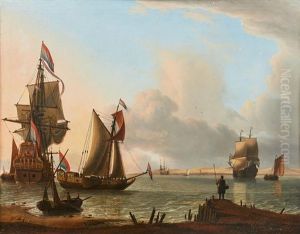
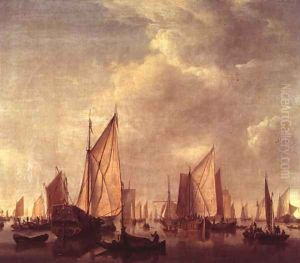
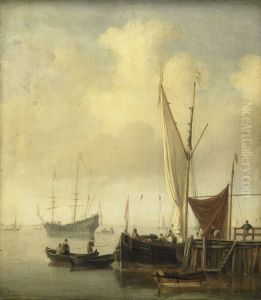
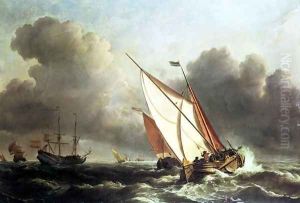
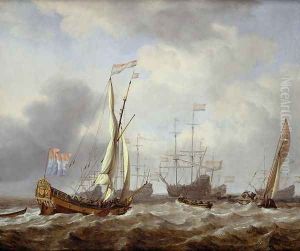
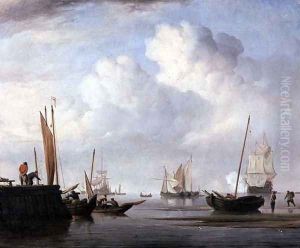
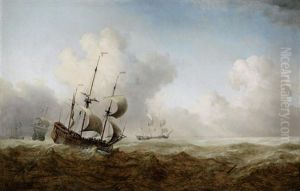
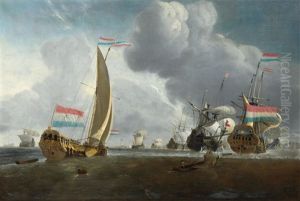
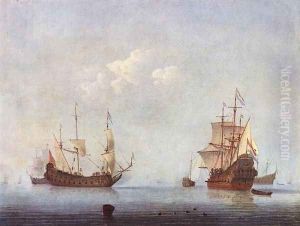
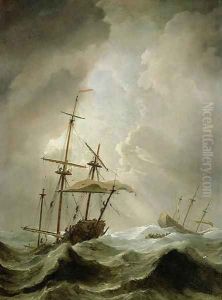
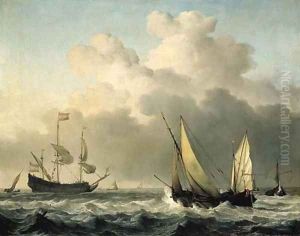
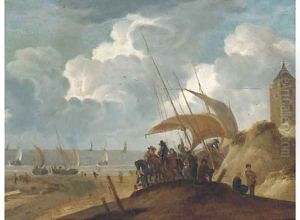
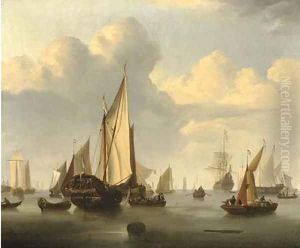
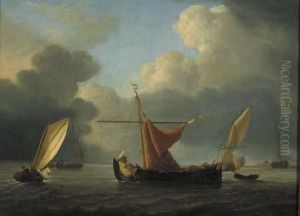
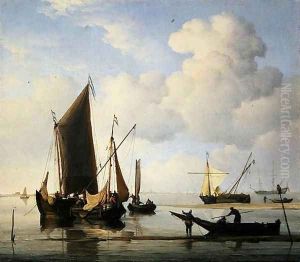
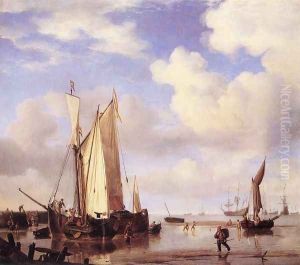
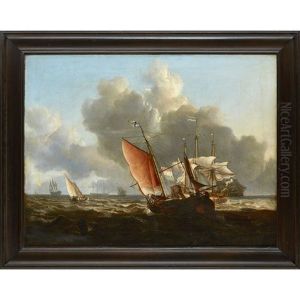
![Seascape [detail #1]](https://www.niceartgallery.com/imgs/301347/s/willem-van-de-velde-the-younger-seascape-detail-1-887ec05e.jpg)
